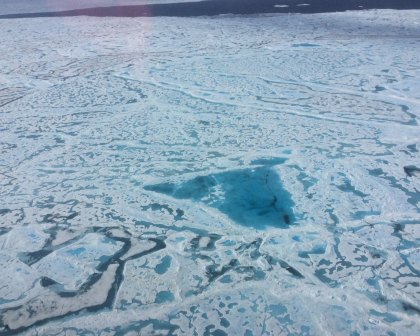Scientists: Temperatures 'dancing' with limit

The Paris Agreement, signed in December by leaders around the world, attempts to limit the temperature increase to 1.5 degrees Celsius above pre-industrial levels. But during the first six months of this year, average temperatures were already 1.3 degrees Celsius warmer than the late 19th century, when records were first kept, according to NASA scientists.
“It’s fair to say that we are dancing with those lower targets,” said Gavin Schmidt, director of the Goddard Institute for Space Studies, during an Internet briefing on the climate hosted by NASA on July 19.
With a scorching summer well underway, high temperatures could make this the hottest year on record. Scientists described fast melting ice and rising temperatures that are part of the ongoing story of climate change. Here are five questions raised during the press conference:
1. This year began with an El Nino, a weather pattern that results from variations in ocean temperatures in the equatorial Pacific, according to the National Oceanic and Atmospheric Administration. Because an El Nino pattern is associated with warming, is it alone responsible for temperatures climbing above the 2015 record?
Not solely, according to Schmidt, but El Nino is a contributing factor. “If you try to parse out how much of this is due to El Nino and how much of it is due to general warming around the rest of the world, about 40 percent of the record above 2015 is due to El Nino and 60 percent is due to other factors, including … the very strong Arctic warming.”
2. Will 2016 be a record year for sea ice loss?
It’s too early to say, according to Walt Meier, sea ice scientist at NASA's Goddard Space Flight Center in Greenbelt, Maryland.
But he added that scientists have noted “the lowest sea ice extent average over the first six months by a fair amount in our satellite record going back to 1979.” This is an extreme year, he said, “but definitely in concert with the long term trend."
3. Will the warming trend continue into 2017?
A La Nina weather pattern -- the opposite phase of El Nino -- could offer some relief. “This year we started off with a strong El Nino event in the Pacific. That has now faded. And predictions for what are going to happen are all toward neutral or La Nina conditions by the end of the year,” Schmidt said. “That implies that next year is going to start off with a cool anomaly relative to where we are today, but we’ve still got the long-term trend."
4. How is climate change evident?
One example is the tundra. “By 2015, because of longer, warmer growing seasons, coupled with shorter, less brutally cold winters, we’ve had a significant change in the vegetation structure,” explained Charles Miller, deputy science lead for the Arctic Boreal Vulnerability Experiment (ABoVE) at NASA's Jet Propulsion Laboratory in Pasadena, California. “You are seeing shrubs or dwarf trees coming in and really changing the landscape.”But while some areas have increasing vegetation, others have less productivity, he said.
5. Will there be more flooding?
“Flooding is a complex thing,” Schmidt remarked. “It depends on what the local history has been, how water is managed in dams, rivers and streams and things. But we can say something about the frequency of intense rainfall events. Those have been increasing pretty much across the Northern Hemisphere. We are seeing more and more rainfalls in the top 10 percent of strength. So when it’s raining, it’s raining harder. And that’s really an expected consequence of the increase in the amount of water vapor in the atmosphere, which is increasing by about 7 percent for every degree of warming that we’re seeing. So there is more water vapor in the atmosphere. That’s leading to more intense rainfall and that can be a contributing factor to increased flooding.”
Related:
Summer to bring climate change consequencesClimate change: 4 ways we feel the heat
If you would like to comment, give us a shout, or like us on Facebook and tell us what you think.

